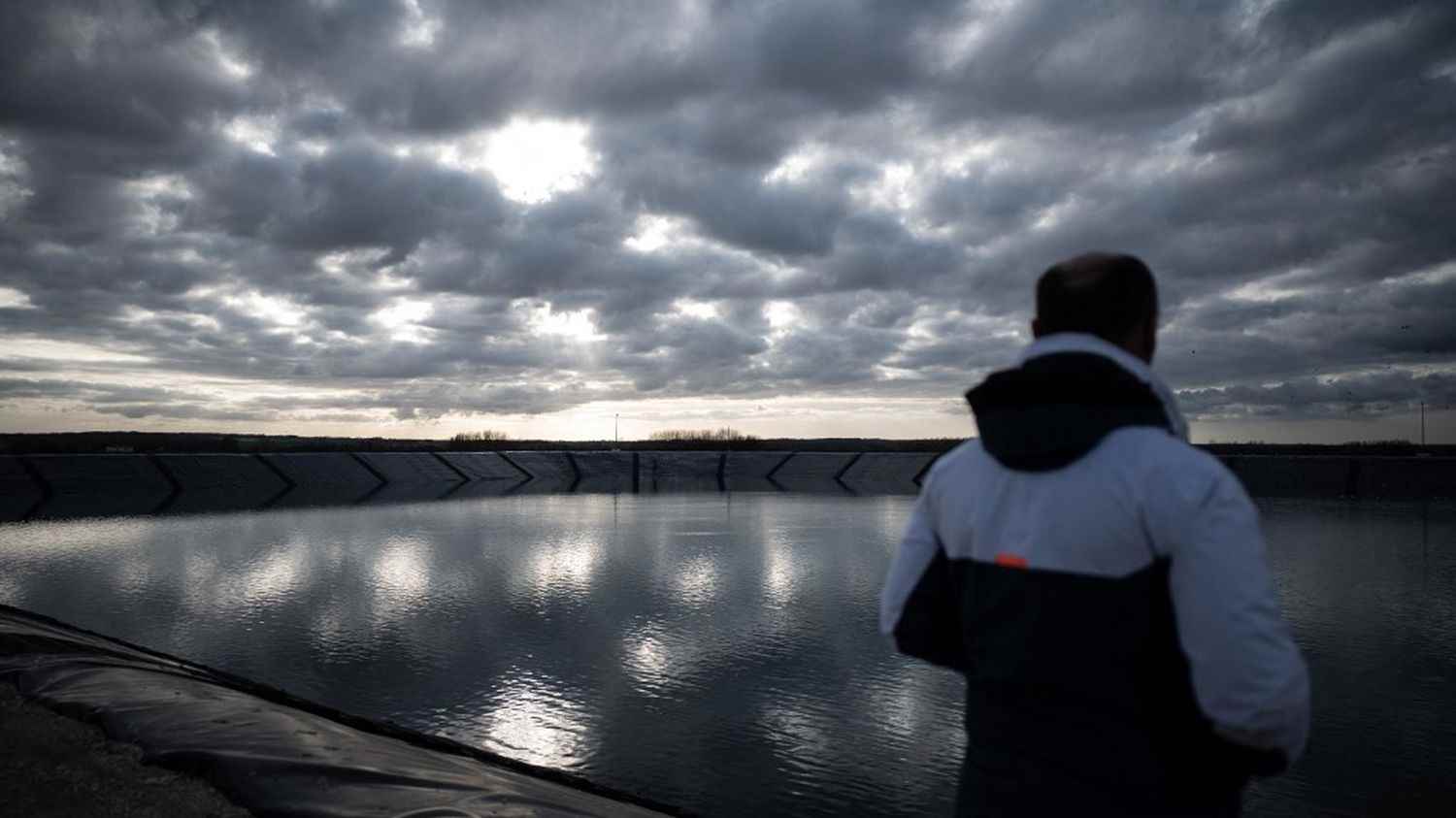Thousands of demonstrators met on Saturday October 29 in Deux-Sèvres to protest against the “mega basins”. Sixteen of these large water reserves should gradually see the light of day in the Sèvre Niortaise basin, in order to ensure the irrigation of 230 farms. On the construction site of one of them, in Sainte-Soline, clashes broke out between the gendarmes and people who entered the site illegally.
>> Environment: are there really eco-terrorists in France, as Gérald Darmanin suggests?
The detractors of these great “craters” accuse these infrastructures of disrupting the water cycle, by drawing on reserves. Because, they claim, these reservoirs are not filled with rainwater, but “by pumps that fetch good quality water from the soil and groundwater”, says the collective Bassines no thank you on its website. But are they saying true or fake?
It is true that the water stored in the basins of the Sèvre Niortaise is taken from the basement. In Mauzé-sur-le-Mignon, a first “substitute deduction”as the farmers prefer to call them, of five hectares, was commissioned in 2022. The principle is to store water in winter when it is abundant, rather than extracting it in the water table in summer, when it becomes scarcer. When the fine weather arrives, farmers can then draw directly from this stock and preserve groundwater.
In Mauzé-sur-le-Mignon, three sampling points are therefore necessary to supply the first substitution reserve already built. Seven boreholes will supply the Sainte-Soline borehole, currently under construction. The Deux-Sèvres prefecture explains to franceinfo that filling is authorized from November 1 to March 31, “the period when the water resource is statistically the most abundant in the department, due to rainfall and low water consumption by natural environments”. In the case of these reservoirs, the water is therefore taken from underground reserves. But the impact of these fillings is “often negligible”, according to the conclusions of a simulation carried out by the Geological and Mining Research Bureau (BRGM) published in June 2022.
The subtlety lies in the geological characteristics of these layers which are shallow. In Sainte-Soline, the boreholes are established on an aquifer “superficial of medium thickness, located about ten meters deep”specifies the prefecture of Deux-Sèvres to franceinfo. The one in which the water is pumped in Mauzé-sur-le-Mignon is “thin” and also located about ten meters underground. The prefecture adds that “taking into account these characteristics, precipitation very quickly influences the piezometric levels [la mesure de profondeur de la surface de la nappe d’eau souterraine] of this tablecloth”.
In other words, when it rains in winter, these sheets fill up very quickly. “These are so-called free aquifers, in direct contact with the atmosphere and with the waterways”, says Alain Dupuy, professor of hydrogeology at the National Polytechnic Institute of Bordeaux. Conversely, for layers called “captives”, much deeper, it takes years, even centuries, before rainwater seeps in. Withdrawal from the surface reserves of Deux-Sèvres therefore depends on rainfall. “If there is no high water phenomenon, the State is there to control the volumes and authorize or not the filling”, completes Alain Dupuy.
Limit thresholds, beyond which filling is prohibited, are indeed imposed by the authorities. “They are set by the environmental authorization issued by the State services, on the basis of an analysis of the effects of filling, in particular on the surface water resource (rivers and wetlands) and underground”details the prefecture. For their part, activists opposed to these water reservoirs do not trust the State services to establish these limits. “The deficit has been chronic for 30 years, but they continue. They remove water from the earth by pumping the groundwater and the rivers”denounces the collective Bassines no thank you on its site.
Some specialists also remain critical of these structures. On Twitterthe hydroclimatologist Florence Habets notes that the Sèvre Niortaise basin has been classified as “watershed area”that is, there is “too much abstraction in relation to the available water resource”. For her, this project could therefore make it possible to preserve the level of the water tables in summer, but it will not guarantee a lasting improvement for the water resource.
